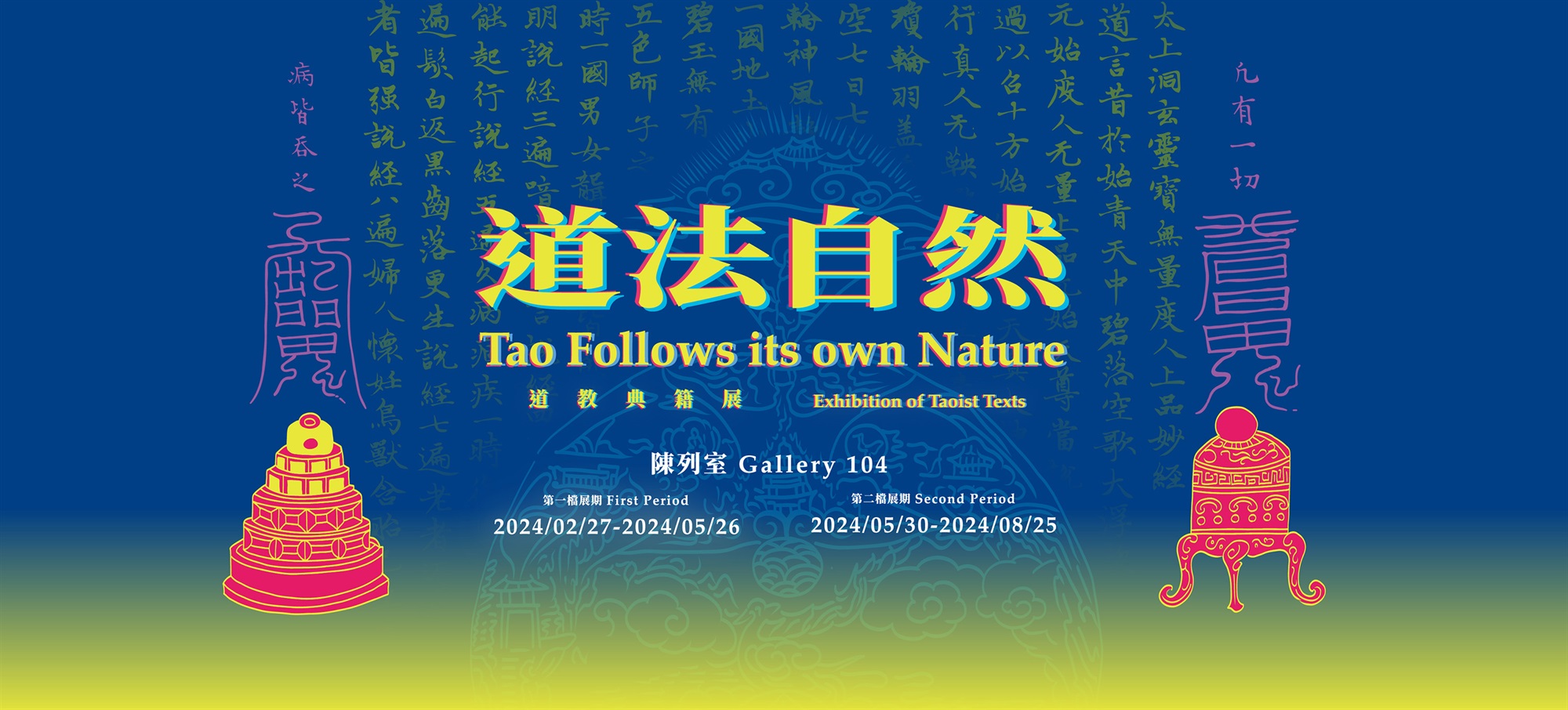Highlights of the Taoist Canon
As Taoism evolved over time, its scriptures increased in number and diversity. Modern libraries divide Taoist texts into four main categories: scriptures on the teachings of the Three Pure Ones; techniques detailing talismanic drawing, incantations, and ritual practices; medical texts on the preparation of alchemical elixirs and qi nourishment; and ethical codes establishing Taoist moral principles. The formal compilation of the Daozang (Taoist Canon) started in the Tang dynasty under Emperor Xuanzong’s directive. Subsequent emperors, including Zhenzong and Huizong of Song, and Shizong of Jin, also ordered revisions. Unfortunately, these early editions of the canon have been lost, with only their names surviving. While the National Palace Museum collection does not have the Zhengtong Daozang published in 1445 during Emperor Yingzong of Ming’s reign, or its continuation from 1607 in the Wanli era, the collection boasts several rare and valuable texts. Noteworthy is the Yunji Qiqian, a Taoist classic compiled by Zhang Junfang during the Northern Song dynasty. Particularly exceptional is the museum’s three-volume copy of the Yuan dynasty Quanzhen School’s edition of Yunji Qiqian, one of only two known extant copies.
-
Xinke Chuxiang Zengbu Soushen Ji
(Newly Printed and Illustrated Expanded Edition of In Search of the Supernatural)
Written by Luo Maodeng, Ming dynasty
Jinling Tang Fuchun edition, Ming dynastyThe original text of Soushen Ji, authored by Gan Bao (?–336) of the Jin dynasty, was lost, and later versions have been pieced together from various sources. The Xinke Chuxiang Zengbu Soushen Ji edition on display was published in 1573 and is an expanded version. One of the earliest editions from Fuchun Tang (a Jiajing-era book printing workshop), it contains 159 woodblock prints depicting deities from the “three teachings” (Confucianism, Taoism, and Buddhism). The featured page shows Tianfei (Mazu), who was honored as “Empress of Heaven” during the Qing dynasty’s Kangxi period.
-
Dafangguang Yuanjue Xiuduoluo Liaoyi Jing Jizhu
(Comprehensive Commentary on the Sutra of Perfect Enlightenment)
Commentary by Shi Yuancui, Song dynasty
Manuscript by Xu Daoguan, Yuan dynasty, 1315These three thread-bound manuscripts were copied in 1315 by a Taoist priest named Xu Daoguan. After Xu’s death, his friend Chan master Yuejiang Zhengyin noted that Xu had devoted his life to scriptural transcription and that many auspicious relics were found after he was cremated. The Dafangguang Yuanjue Xiuduoluo Liaoyi Jing Jizhu was authored by Yuancui, a Southern Song dynasty monk from the Tiantai School, and completed in 1214. Yuancui was a disciple of Beifeng Zongyin (1149–1214).
-
Yihua Yuanzong
Compiled by Gao Shiming, Ming dynasty
Printed edition, Ming dynasty, 1624This twelve-volume collection contains forty-nine Taoist texts, all compiled and edited by Gao Shiming (?–1644). The colophon of the final volume indicates that Gao, a Taoist, respectfully dedicated this book in 1624. Gao Shiming served as an imperial eunuch during the late Ming dynasty, from the Tianqi to the Chongzhen period, overseeing the Directorate of Ceremonial. In 1644, when rebel leader Li Zicheng seized the capital Beijing, Gao chose to self-immolate in the palace, following the emperor in death.
-
Xuxian Hanzao
(Literary Writings of the Immortal Xu Brothers)
Compiled by Chen Menggen, Yuan dynasty
Manuscript, Ming dynastyThe colophon indicates that Xuxian Hanzao was compiled by Chen Menggen in 1305 and later included in the Wanli Continuation of the Daozang. The collection features over two hundred poems, songs, and prose works documenting the worship of the immortals Xu Xian across different regions during the Five Dynasties, Song, and Yuan periods. Some texts are believed to have been directly inspired by Xu Xian, while others praise their virtues and recount their miraculous deeds, hence the title Xuxian Hanzao (Literary Writings of the Immortal Xu Brothers). “Xu Xian” refers to the brothers Xu Zhizheng and Xu Zhie from the Southern Tang dynasty. From the Five Dynasties period to the Ming period, temples were commonly erected in their honor.
-
Xingming Shuangxiu Wanshen Guizhi
(Principles of Inner Nature and Vital Force)
Anonymous
Printed edition by Wu Zhihe, Ming dynasty, 1615The authorship of this work is unclear, but by tradition it has been attributed to a disciple of Yin Xi. The book is divided into four sections, each accompanied by detailed illustrations. Primarily, it introduces the practice of “internal alchemy” and techniques for cultivating and guiding qi. Scholars suggest that Taoist priests from the Quanzhen School compiled it in the mid to late Ming dynasty as a comprehensive summary of methods of internal alchemy. To this day, the Quanzhen School considers the text a fundamental guide for qi cultivation and spiritual practice.


